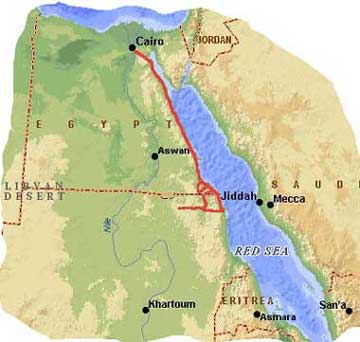
1st Joint Survey of the Desert Locust Winter Breeding Areas
on the Egyptian-Sudanese Border
26 February - 8 March 2000
A joint survey was organized by the FAO Central Region Desert Locust Commission and the EMPRES programme to survey Desert Locust breeding areas on both sides of the Egyptian-Sudanese border. This is the first time that such a survey has been undertaken. Report (PDF): text (534kb) photos (767kb) part 1: Egypt (26-29/2)
Arabic press report
part 2: Egypt - Sudan (29/2-3/3)
part 3: Nubian Desert, Sudan
part 4: Sudan - Egypt (4-7/3)

Locust officers from the nine EMPRES countries, led by two FAO experts, surveyed more than 1200 km and drove an additional 2400 km in 12 days.Remote sensing imagery was used to identify possible areas of green vegetation. A new area was discovered during the survey in the Nubian Desert of Sudan that may play an important role in Desert Locust breeding. In general, all areas were very dry and no locusts were found except for two isolated adults in one place near the border. Consequently, no significant developments are expected in the coming months. The results will be used to plan for the upcoming summer breeding period. A detailed report includes survey results, habitat observations, photos and suggestions for the next joint border survey.
A service provided by the Migratory Pests Group to monitor the world-wide locust situation and keep
affected countries and donors informed of expected developments.
Food and Agriculture Organization (FAO) of the United Nations, Rome, Italy
|
Comments?: [email protected]